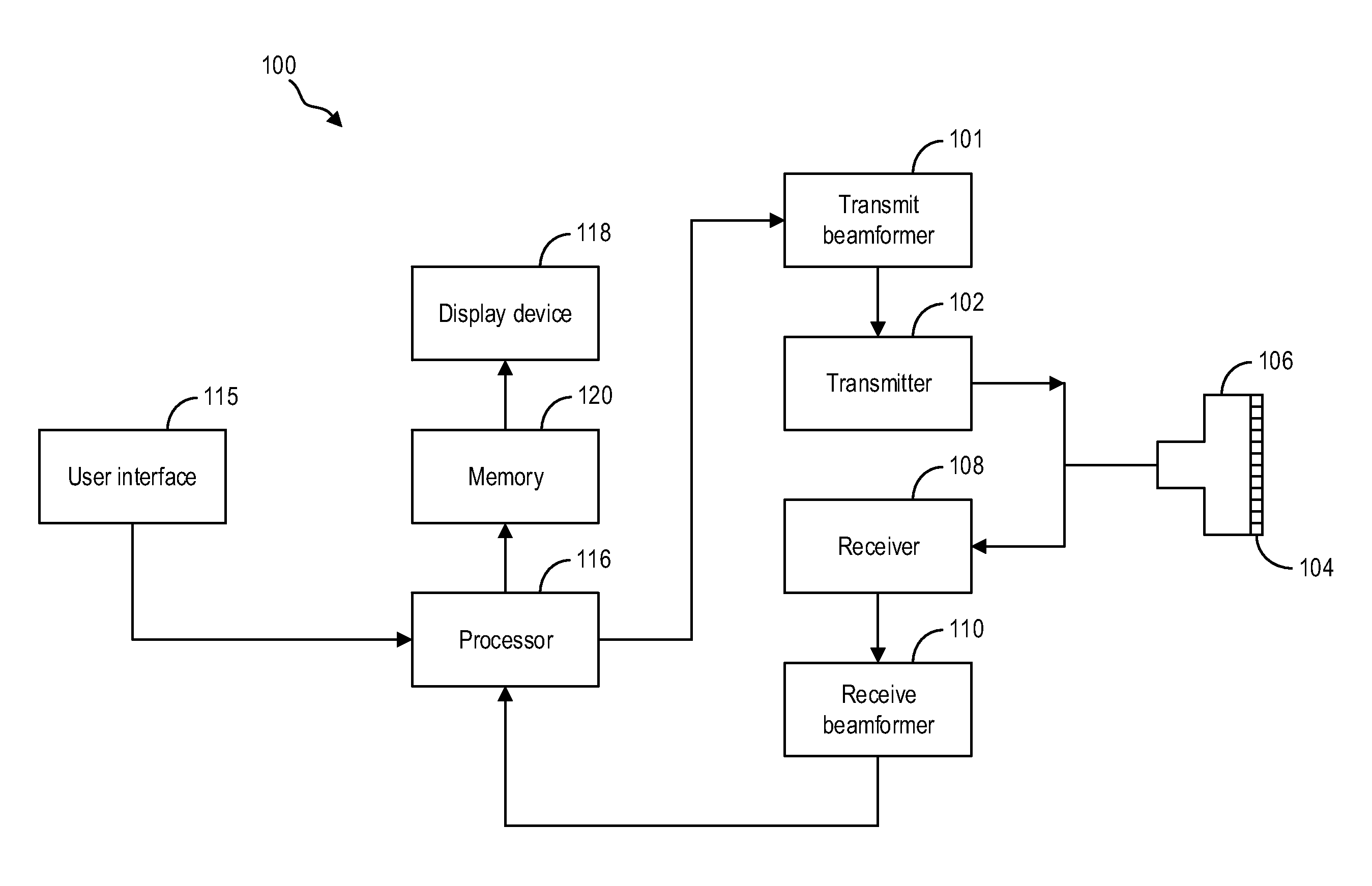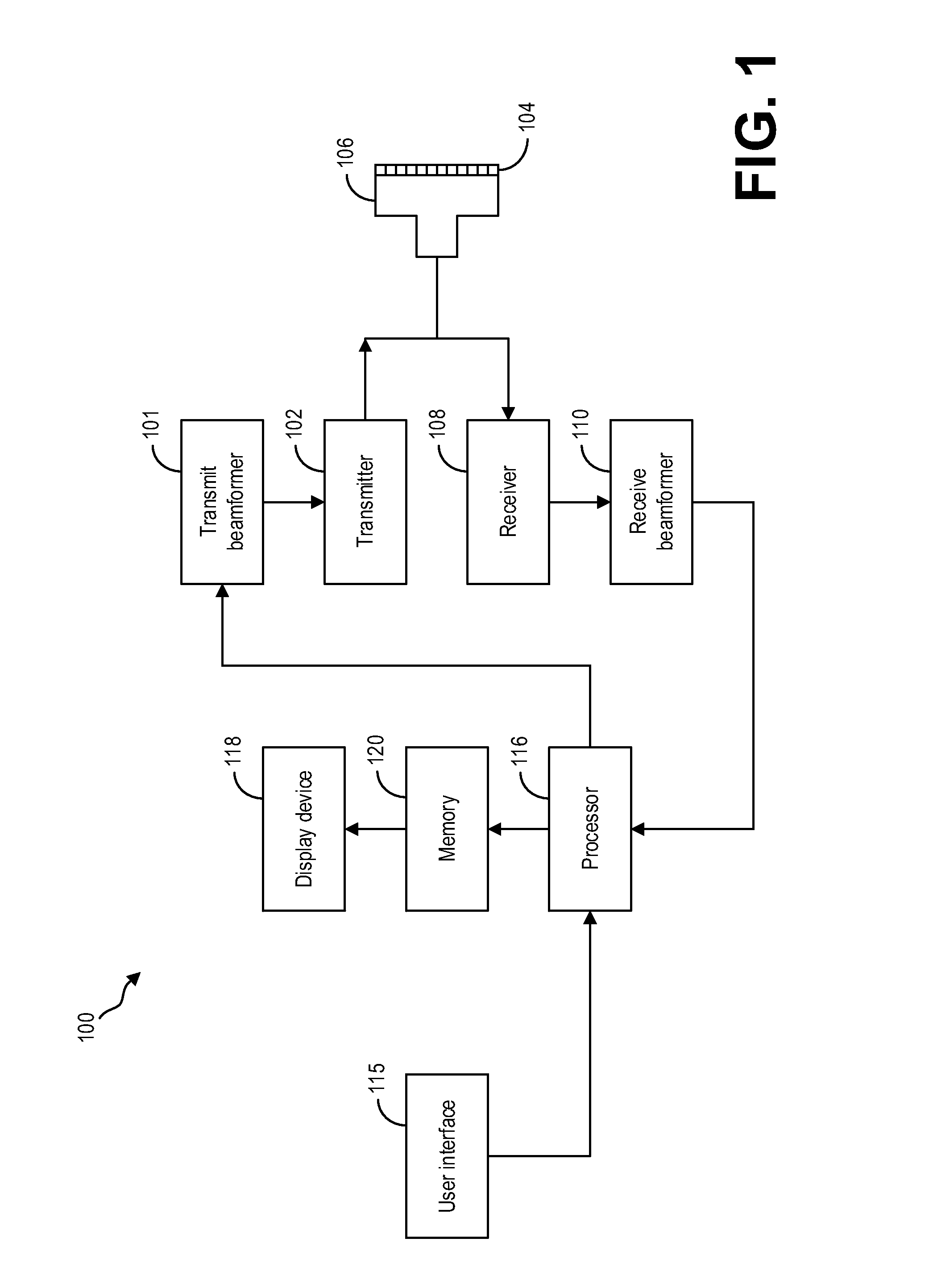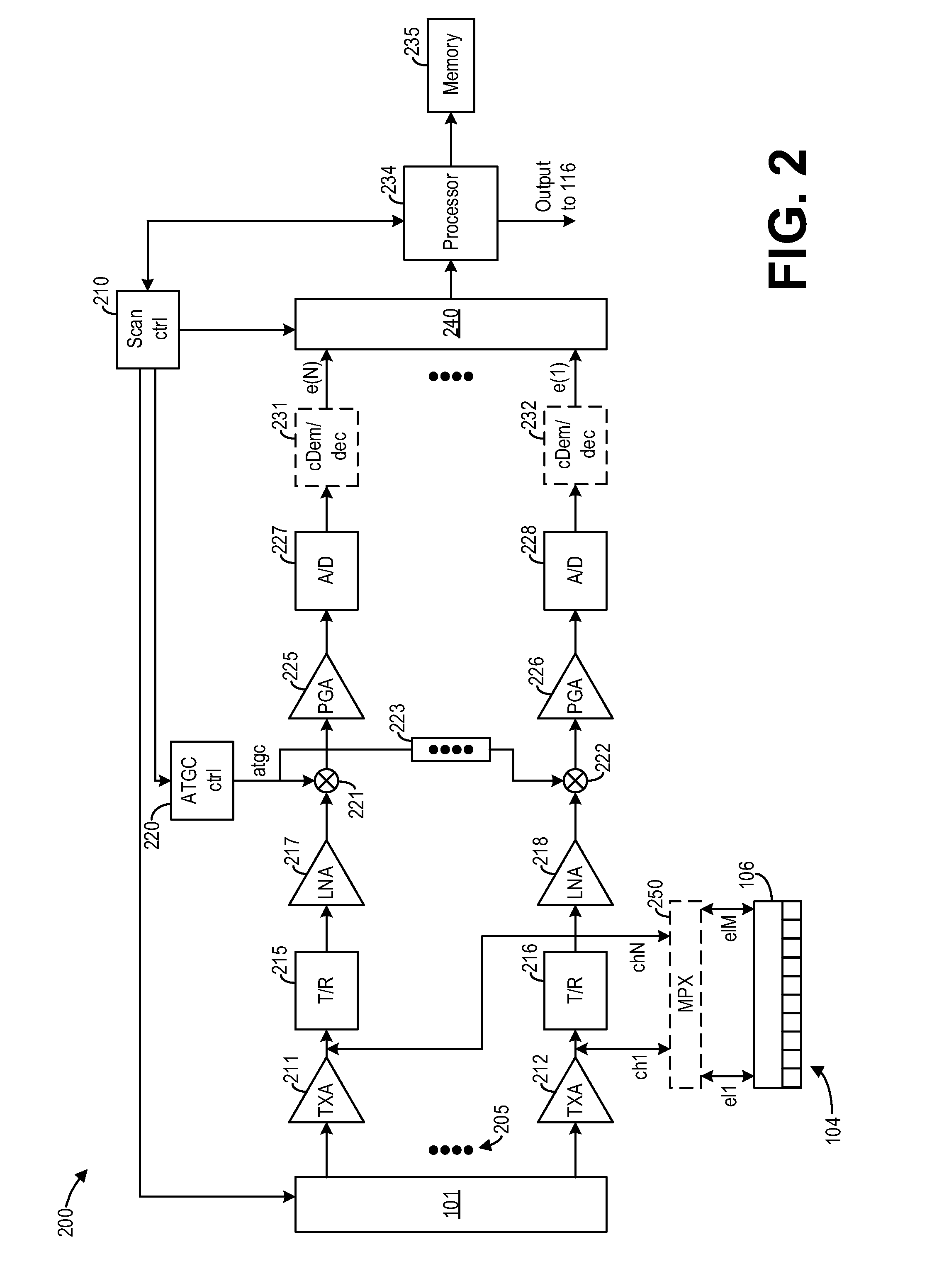Methods and systems for ultrasound imaging
a technology of ultrasound imaging and ultrasound signal, applied in the field of ultrasound imaging techniques, can solve the problems of affecting the final ultrasound image, weak echo, and a/d converter saturation, and achieve the effect of optimizing the signal-to-noise ratio of echo signals and improving the quality of ultrasound images
- Summary
- Abstract
- Description
- Claims
- Application Information
AI Technical Summary
Benefits of technology
Problems solved by technology
Method used
Image
Examples
Embodiment Construction
[0014]The following description relates to various embodiments of ultrasound imaging techniques. In particular, methods and systems for automatically adjusting an analog time gain compensation (ATGC) profile are provided that improve control of the ATGC in order to improve signal-to-noise ratio (SNR) of echo signals while balancing other issues. An ultrasound imaging system such as the system shown in FIGS. 1 and 2 may include an ATGC controller, such as the controller shown in FIG. 3, configured to apply an analog gain to echo signals. The analog gain may compensate for attenuation of the echo signals caused by tissue and strong scatterers, as well as diffraction effects. The peak amplitudes of gain-compensated echo signals originating from control points, such as those depicted in FIG. 4, may be used to adjust the analog gain for subsequent ultrasound frames using the method shown in FIG. 5. Adjustments to the analog gain may be limited by a maximum and minimum threshold, such as ...
PUM
 Login to View More
Login to View More Abstract
Description
Claims
Application Information
 Login to View More
Login to View More - R&D
- Intellectual Property
- Life Sciences
- Materials
- Tech Scout
- Unparalleled Data Quality
- Higher Quality Content
- 60% Fewer Hallucinations
Browse by: Latest US Patents, China's latest patents, Technical Efficacy Thesaurus, Application Domain, Technology Topic, Popular Technical Reports.
© 2025 PatSnap. All rights reserved.Legal|Privacy policy|Modern Slavery Act Transparency Statement|Sitemap|About US| Contact US: help@patsnap.com



